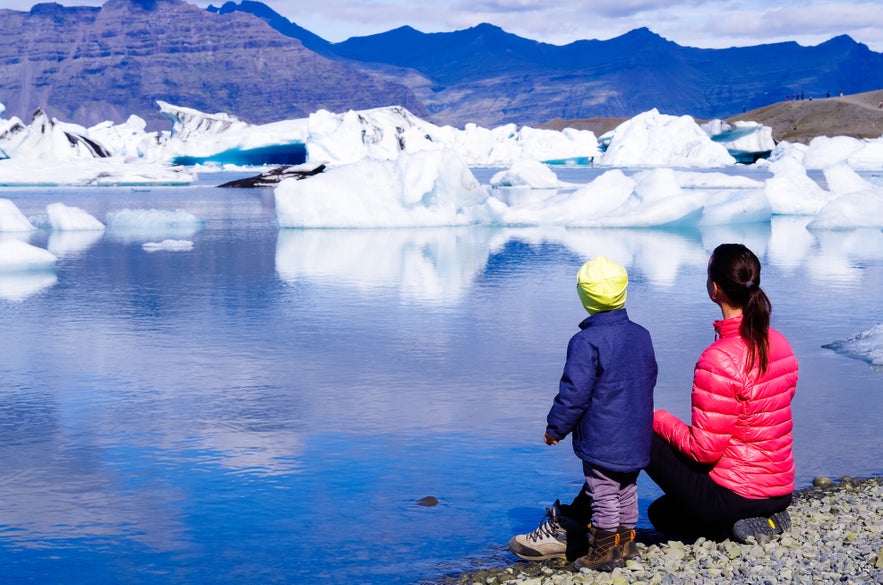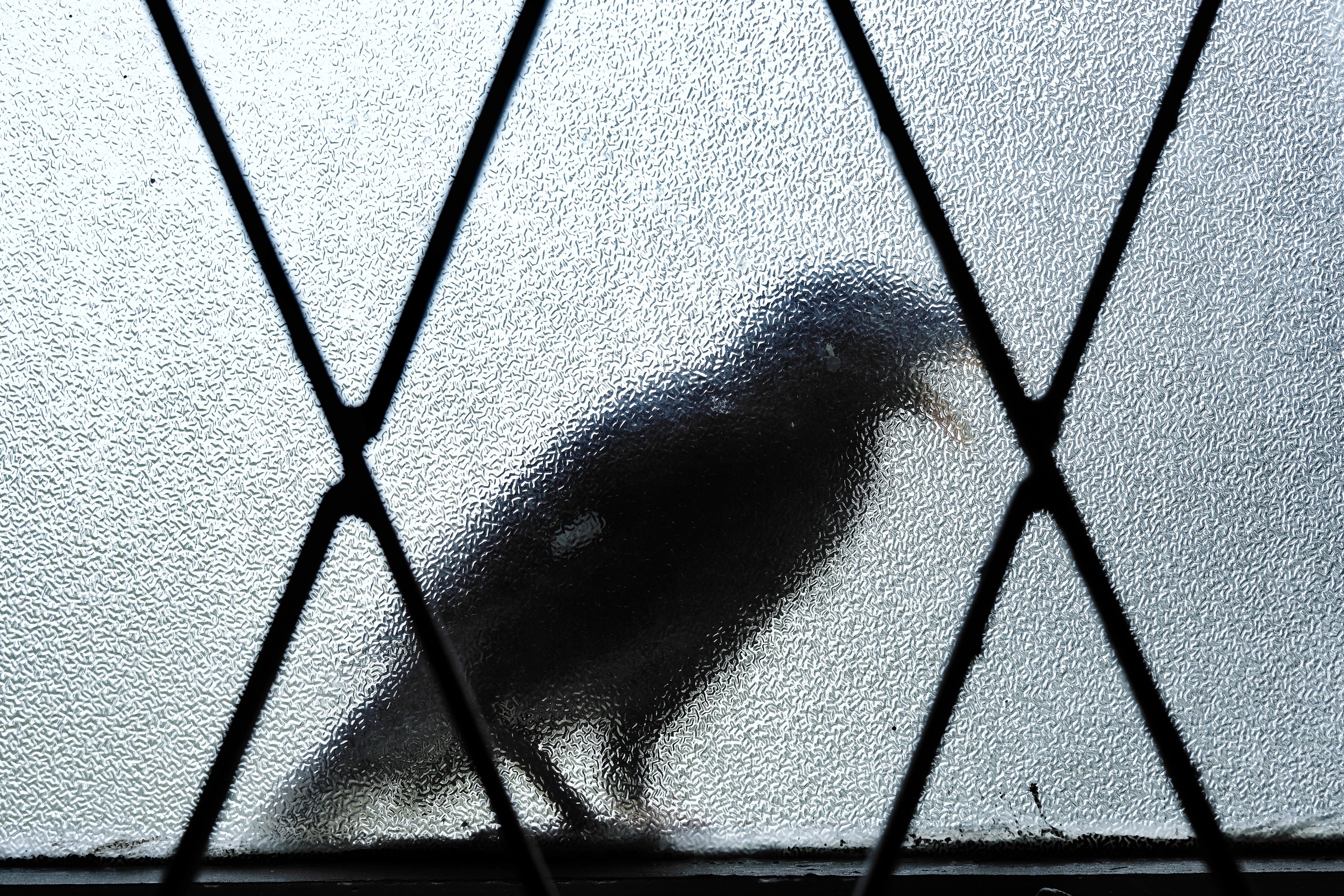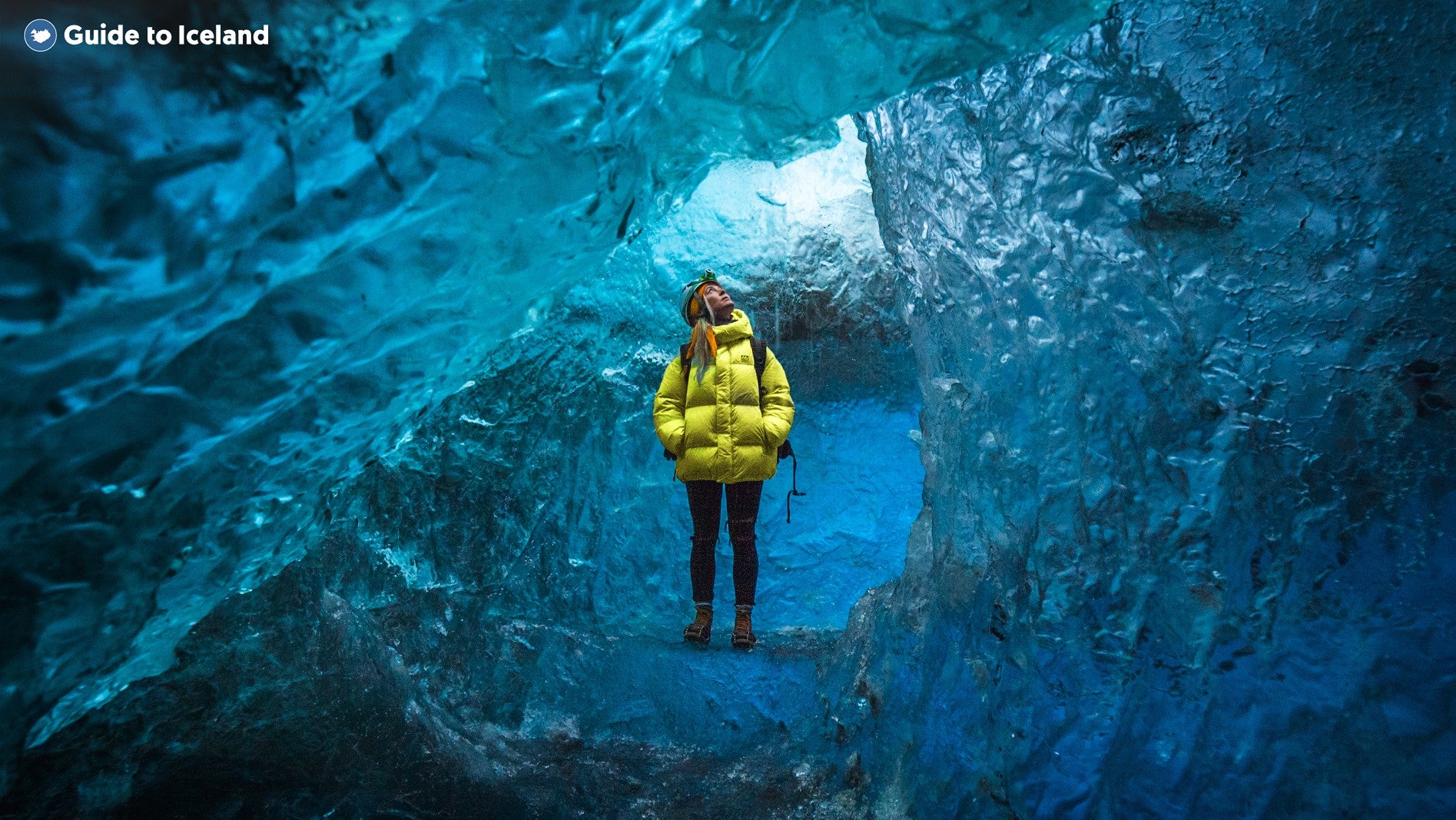
Although the seasons in Iceland are notoriously hazy, the summer season in Iceland typically begins in June and lasts through August. As winter recedes, certain exciting locations, such as the Landmannalaugar pools and the remote region of the Westfjords, open up during summer. It is a perfect time for adventurous travelers to rent a car and find their dream accommodation in Iceland.
Other popular staples, such as the Golden Circle, Snaefellsnes Peninsula, and Diamond Beach, transform into a whole new experience when accompanied by the perpetual daylight of summer. Another great way to experience the midnight sun is by taking a relaxing dip in the geothermal waters of the Blue Lagoon or Hvammsvik Hot Springs.
Why You Can Trust Our Content
Guide to Iceland is the most trusted travel platform in Iceland, helping millions of visitors each year. All our content is written and reviewed by local experts who are deeply familiar with Iceland. You can count on us for accurate, up-to-date, and trustworthy travel advice.
Summer is also an ideal time to get to know Icelandic wildlife when the country's unique flora is blooming. Get to know Iceland's iconic seabird or witness the gentle giants of the ocean on whale watching and puffin tours. If you're lucky, you might even spot a seal lounging on one of Iceland's iconic black sand beaches.
All this and several lively festivals and cultural events make summer an excellent time to visit Iceland. Read on to learn everything you need to know about visiting Iceland in the summer.
Things to Do in Iceland in Summer
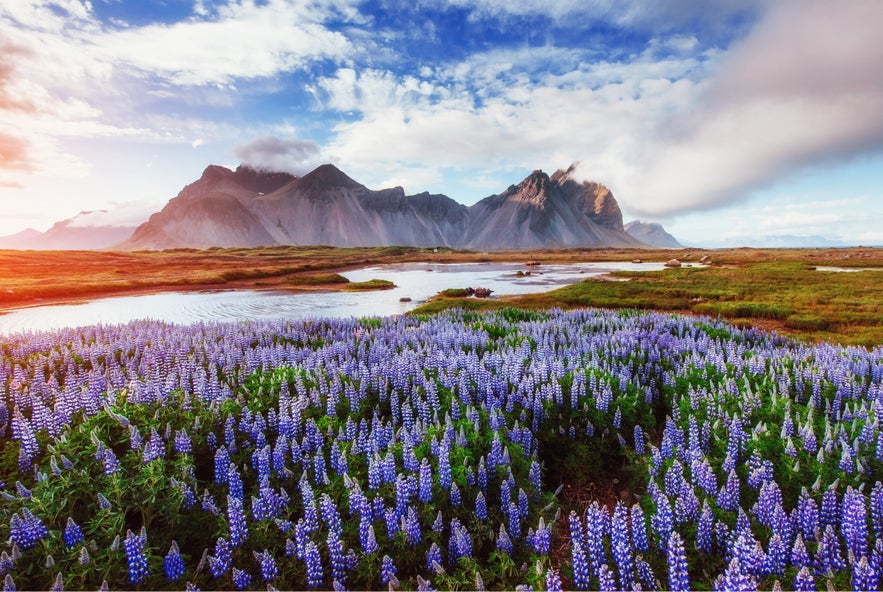 Summer in Iceland is a fantastic time to visit and is high season for a good reason. The weather is at its best, exciting sites that remain closed during the other seasons open up, and the lingering daylight grants relaxing flexibility to explore Iceland at your own pace.
Summer in Iceland is a fantastic time to visit and is high season for a good reason. The weather is at its best, exciting sites that remain closed during the other seasons open up, and the lingering daylight grants relaxing flexibility to explore Iceland at your own pace.
Visit the Golden Circle: One of Iceland's best-known attractions, the Golden Circle combines the stunning natural beauty of the Geysir geothermal area and the Gullfoss waterfall with the historical and geological wonder of Thingvellir National Park.
Relax in hot springs: The hot springs of Iceland are world-renowned, and summer is a great time to visit them. Buy a ticket to the Blue Lagoon or Hvammsvik Hot Springs and lose track of time in the endless daylight by taking a soothing dip in these popular hot springs.
Visit the Highlands: The jaw-dropping wilderness of the Icelandic Highlands is only accessible in the summer season. Use the opportunity to explore the valley of Thorsmork on a super jeep and hiking tour and tackle the route to Landmannalaugar on a full-day buggy adventure.
Enjoy Reykjavik: Iceland's capital is vibrant in the summertime, with bustling nightlife, cultural events, and an evergrowing restaurant scene. Find a day tour from Reykjavik that fits your itinerary, and be back in the city before dinner.
Go whale-watching: Many whales migrate to Iceland in summer, making it a great time to go whale-watching. Get humbled in the presence of these majestic creatures by seeing them up close.
Explore the Westfjords: The Westfjords is a stunning region full of dramatic fjords and cliffs and is hard to reach outside the summer season. Make use of this opportunity to go on this 7-hour puffin and bird-watching tour.
Things to Know About Iceland in Summer
Summer in Iceland offers long days, mild weather, and the best conditions for exploring the country’s natural wonders. Before diving into specific tips, here things to know about Iceland in summer.
Northern Lights Make Way for Midnight Sun
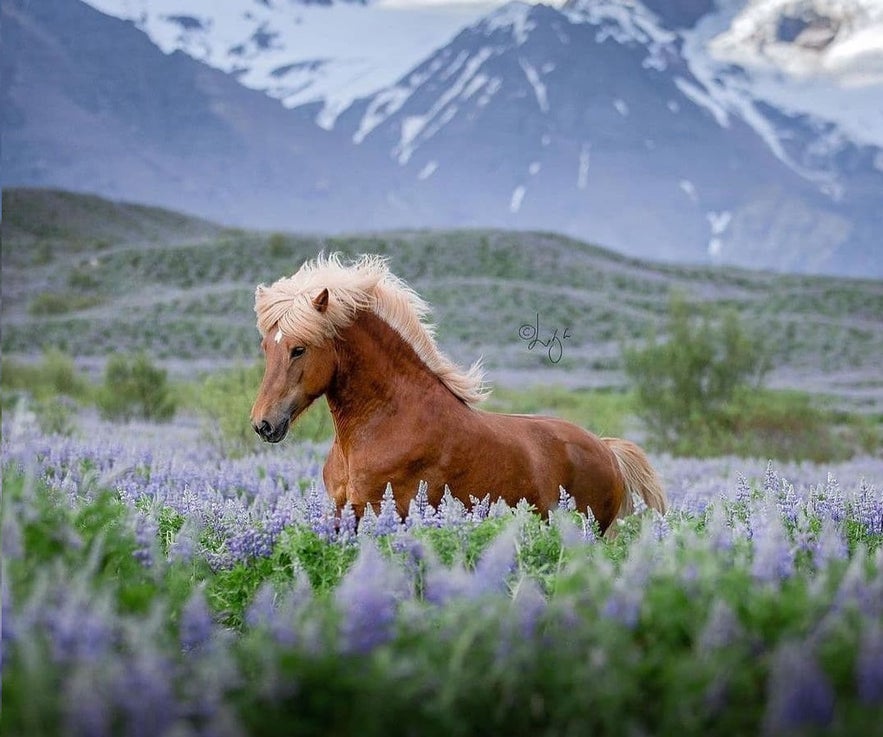
Unfortunately, the northern lights are unlikely to make an appearance in Iceland during the summer months. Since it doesn't get truly dark in Iceland during this time, viewing the northern lights is nearly impossible.
The best time to see the northern lights in Iceland is generally during the other seasons, so make plans to enjoy other aspects of Iceland in the evening instead. Booking a tour under the midnight sun can be just as spectacular as it allows you to explore natural wonders in a unique way.
Longer Days Make Planning Flexible
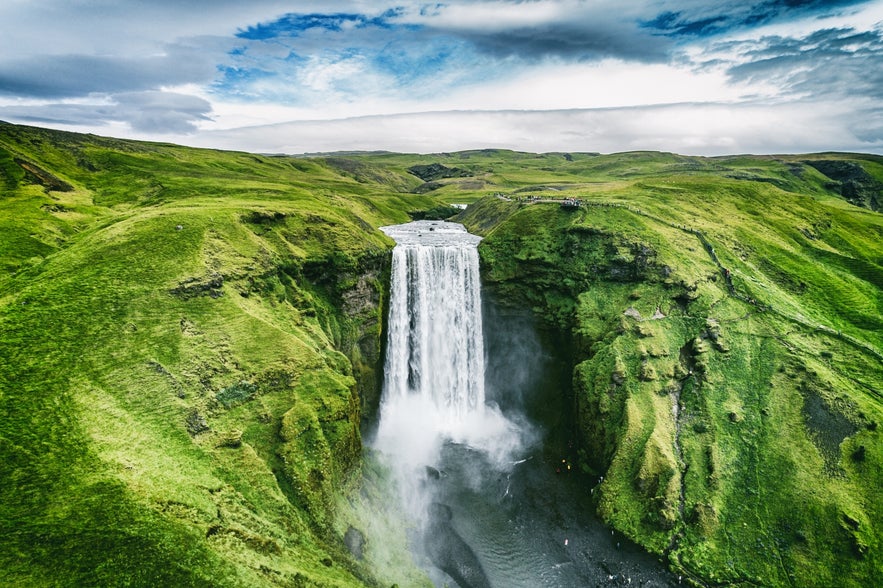 With pleasant weather and bountiful daylight, summer is a time when many people flock to Iceland, so you can expect popular natural attractions to be more crowded than in other seasons. Popular tours and restaurants might fill up quickly if you don't make bookings or reservations in a timely manner.
With pleasant weather and bountiful daylight, summer is a time when many people flock to Iceland, so you can expect popular natural attractions to be more crowded than in other seasons. Popular tours and restaurants might fill up quickly if you don't make bookings or reservations in a timely manner.
However, longer days also mean that you have increased flexibility when it comes to planning. For example, you might want to consider visiting popular sites early in the morning or later in the evening. Don't worry, you'll always have plenty of daylight!
There Is Still Plenty of Ice
Just as its name suggests, Iceland has plenty of beautiful icy landscapes on offer, so you can go hiking on magnificent glaciers or visit the stunning Jokulsarlon glacier lagoon. Although the weather is certainly warmer than the other seasons, summer is a great time to visit these areas. But rest assured, they will still be icy!
Cruise between the icebergs of the glacier lagoon in an amphibian boat tour or delve inside the ice in an ice-caving tour in Katla. Experiencing these icy conditions will be a great contrast to the warmer weather that the Icelandic summer has to offer.
The Summer Weather in Iceland
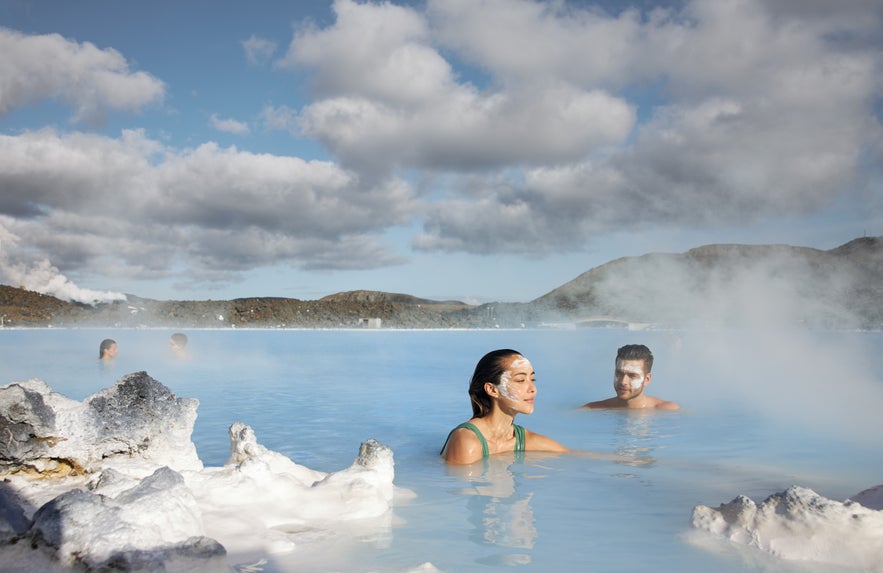
During the summer, the weather in Iceland is at its mildest and most predictable. As the days grow long, expect temperatures to be quite a bit higher than in the other seasons. However, Icelandic weather is notorious for its unpredictability in general, so it's always wise to be prepared for various conditions.
When preparing for your trip, pack warm and waterproof clothing, sturdy hiking boots, a hat, gloves, and a scarf. Dressing in layers is a good strategy since you can add or remove layers as needed.
Overall, the weather in summer makes it an excellent time to visit Iceland. Just make sure to check the local forecast frequently and be prepared for changing conditions before heading out on your next adventure.
Average temperature in June
As the summer season kicks off in June, the average temperatures range from 46°F to 59°F (8°C to 15°C). Don't be surprised to see temperatures reaching the 70°F mark (21°C).
Average temperature in July
July is generally Iceland's warmest month, with average temperatures ranging from 50°F to 59°F (10°C to 15°C).
Average temperature in August
As summer comes to a close with August, average temperatures are still quite pleasant, ranging from 46°F to 57°F (8°C to 14°C). Again, the swingy weather makes higher temperatures quite common.
What to Pack for Summer in Iceland
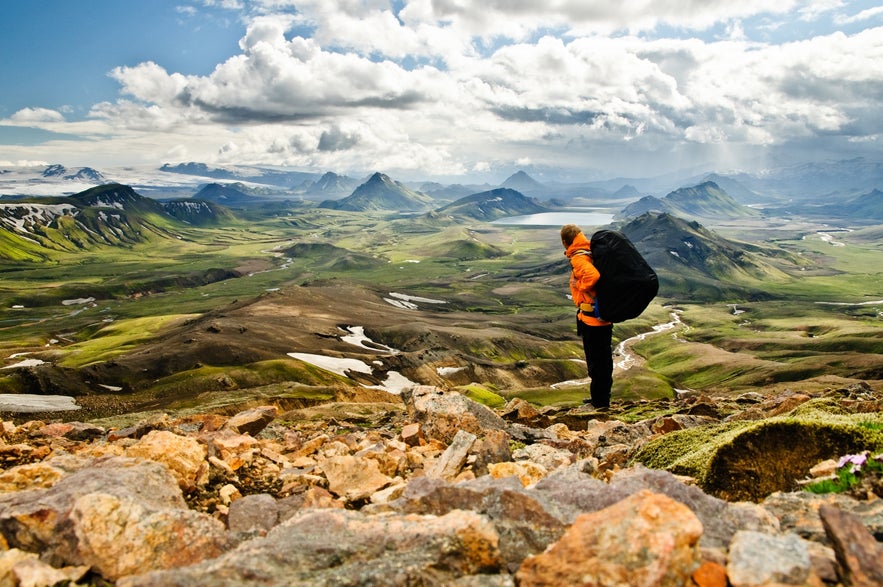 Although summer in Iceland is warmer than the other seasons, it is still cool compared to many other countries, so you can safely leave the flip-flops back home. In addition, traveling outside of the city requires warm and waterproof clothing and sturdy shoes. Here are some essential items to pack for a trip to Iceland in summer:
Although summer in Iceland is warmer than the other seasons, it is still cool compared to many other countries, so you can safely leave the flip-flops back home. In addition, traveling outside of the city requires warm and waterproof clothing and sturdy shoes. Here are some essential items to pack for a trip to Iceland in summer:
-
Layered Clothing: Even though the summer is mild, the weather changes quickly, and things can get quickly get colder in the wilderness. Remember to pack layers, starting with a base layer to keep you dry, a middle layer for insulation, such as a fleece or wool sweater, and a waterproof and windproof outer layer. Avoid cotton as it retains moisture and can make you feel colder if you get wet.
-
Warm Accessories: Be sure to bring a warm hat, gloves, and a scarf to be prepared for sudden weather fluctuations.
-
Footwear: Waterproof hiking boots are necessary for outdoor activities. Make sure they're comfortable for long walks and provide good ankle support. For easier-to-reach areas, a good pair of walking shoes can be sufficient.
-
Rain Gear: Pack a waterproof jacket and consider rain pants. You never know when it might start pouring!
-
Summer Clothing: On the other side of the coin, Icelandic summer can also get surprisingly warm. Pack some lighter clothing to enjoy the summer in Reykjavik and a pair of sunglasses to protect your eyes from the bright summer and earn some style points.
-
Swimwear: Although swimming pools and hot springs generally have swimwear available for rent, it's better to bring your own.
-
Photography Equipment: Don't spend your days regretting not capturing the beautiful vistas in the midnight sun. Bring a camera and all the necessary accessories.
-
Travel adapter: Depending on where you're traveling from, don't forget to bring a travel adapter for charging electronic devices in Iceland.
-
A Sleeping Mask: You might want to consider bringing a sleeping mask to stave off the brightness from the midnight sun.
- See also: What to Wear in Iceland
Driving in Iceland in Summer
 Driving in Iceland during summer is generally more manageable than in the other seasons, as ice on the road is less of an issue except on certain mountain roads. With the Highlands being accessible in the summer, however, certain challenges may arise when travelers go off the beaten path and onto the Highland roads.
Driving in Iceland during summer is generally more manageable than in the other seasons, as ice on the road is less of an issue except on certain mountain roads. With the Highlands being accessible in the summer, however, certain challenges may arise when travelers go off the beaten path and onto the Highland roads.
The Ring Road, which encircles the whole of Iceland, provides access to many of the country's top sights and is well-maintained. However, you should always check road conditions before going on any trips and be prepared to adjust your plans if necessary.
If you plan on visiting the Highlands, renting a four-wheel drive vehicle with high clearance is necessary. These vehicles are often vital to travel roads leading to remote locations. Be careful when driving on gravel roads. Reduce your speed, keep safe from other vehicles, and watch for animals, such as roaming sheep or arctic foxes in rural areas. If you're unsure what type of vehicle you'll need, check out our guide to rental car sizes in Iceland.
No matter how tempting, don't stop your car on the side of the road to take pictures, and remember that off-road driving is illegal and will result in high fines.
Enjoy the Midnight Sun
 The midnight sun is a fascinating natural phenomenon that Iceland shares with other locations close to the Arctic Circle. During the summer, the sun doesn't fully set and remains visible 24 hours a day. In Iceland, this occurs from late May to early August. The longest days are around the summer solstice, usually June 21st.
The midnight sun is a fascinating natural phenomenon that Iceland shares with other locations close to the Arctic Circle. During the summer, the sun doesn't fully set and remains visible 24 hours a day. In Iceland, this occurs from late May to early August. The longest days are around the summer solstice, usually June 21st.
The longer days have had an impact on Icelandic culture and folklore. Midsummer's Night, or Jonsmessa, takes place on June 24th and is believed to be the most magical night of the year. Tales tell of cows developing human speech, seals taking on human form and dancing naked on the beaches, and elves and trolls coming out to play.
The added daylight offers increased flexibility when planning your now longer days and creates unique opportunities for adventure. The colorful drape of the midnight sun covering the already beautiful landscapes makes for an otherwordly experience.
If you want to get in touch with the wildlife, you might want to consider jumping aboard a midnight sun whale-watching boat tour. Spotting majestic whales against the backdrop of the bright and vibrant night sky is an experience you won't soon forget.
If you want to mix the bright night sky with some action, you could get your thrills on a 2-hour midnight sun ATV tour or go kayaking by Mt. Kirkjufell under the midnight sun.
Discover Reykjavik in Summer
 Summer is a great time to visit Iceland's capital, as the inhabitants of Reykjavik and its greenery spring to life during this time. There's plenty to see and do within Reykjavik in summer, whether it's historic buildings, intriguing culture, or energetic nightlife.
Summer is a great time to visit Iceland's capital, as the inhabitants of Reykjavik and its greenery spring to life during this time. There's plenty to see and do within Reykjavik in summer, whether it's historic buildings, intriguing culture, or energetic nightlife.
Perlan is one of Reykjavik's most iconic and interesting buildings. This rotating glass dome nestled atop six hot water tanks houses a restaurant, a viewing platform, and various exhibitions. Located on a hill and surrounded by a forest, The Pearl is a great place to get a panoramic view of the city in summer.
Another iconic building in Reykjavik is Hallgrimskirkja church. At 245 feet (74.5 meters) tall, it is Iceland's largest church and is world-renowned for its architecture inspired by hexagonal basalt columns found in nature. You can visit the top of the tower, which is another great panoramic photo spot. In the midnight sun, Hallgrimskirkja becomes a great and easily spotted landmark for lost travelers to get their bearings.
The city also has a thriving culinary scene, with seafood and lamb prominently featured in traditional Icelandic cuisine. Get a juicy insight into the food culture of Icelandic people by visiting the best restaurants that Reykjavik has to offer.
Experience Nightlife in Broad Daylight
Photo from Guided 3-Hour Reykjavik Bar Tour with 3 Complimentary Beers & Pub Discounts Included
Reykjavik is famous for its energetic nightlife, which doesn't slow down at all during the summer despite the fact that it doesn't get dark but rather gets even wilder. Many bars and clubs stay open until the early hours of the morning.
A great trait of Reykjavik's nightlife is how compact it is, with most of the popular spots being within walking distance of each other. None of the bars charge entrance fees, barring scheduled events, so make your way through the ever-increasing selection of Icelandic brews on tap. Be careful, as you can easily lose track of time and get surprised when the clubs close up in broad daylight!
Icelandic Cultural Events in Summer
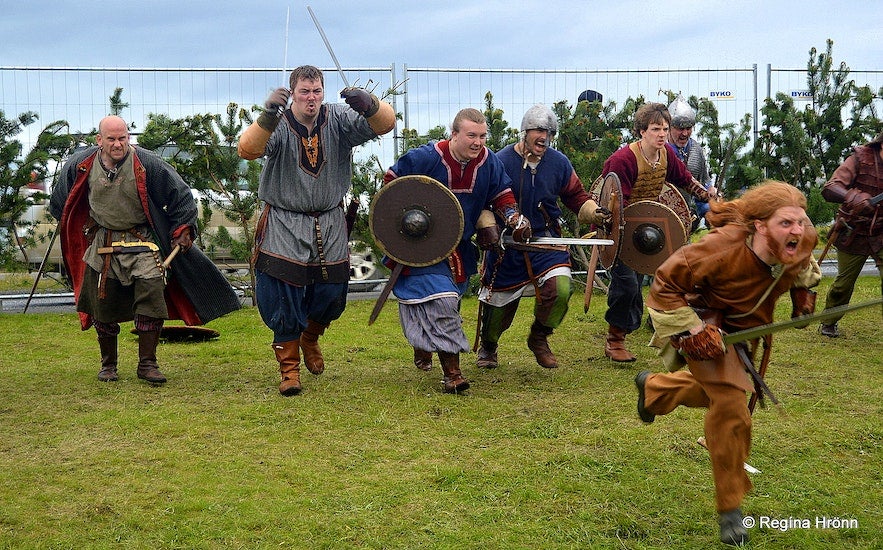
Photo by Regína Hrönn Ragnarsdóttir
While there are festivals and cultural events in Iceland throughout the year, most are held during the summer, when the warmer weather and persistent daylight add to the experience. Here are a few festivals and cultural events to keep an eye on, each celebrating a unique aspect of Icelandic culture:
- Independence Day is a national holiday celebrated annually on June 17th, commemorating Iceland's independence from Denmark in 1944. It is one of Iceland's most significant cultural events in Iceland, with various events, parades, and other festivities held all over the country.
- Merchant's Weekend, or Verslunarmannahelgi, is one of the most anticipated holidays of the year for the people of Iceland. Traditionally held on the first weekend in August, it is celebrated with unique festivals all over Iceland, the most famous and popular one being Thjodhatid, which takes place on the Westman Islands. Tens of thousands of people flock to the Islands over the weekend, which includes multiple concerts and a huge bonfire.
- The Viking Festival in Hafnarfjordur is a popular event with locals and visitors. As the name suggests, it aims to celebrate and recreate the atmosphere of the Viking Age and offer a glimpse into Viking culture. It features actors dressed in authentic Viking garb reenacting in battle, an opportunity to sample traditional Viking food and drink, as well as a market of handmade goods made by local craftsmen.
- Reykjavik Culture Night, or Menningarnott, is an annual event held in Reykjavik on the third Saturday in August. It celebrates Icelandic culture in all forms, with many events being held throughout the city, culminating in a fireworks show in the evening.
- Reykjavik Pride has become one of the largest festivals in Iceland, where the LGBTQ+ community and its supporters take to the streets to celebrate the freedom of love. It takes place on the second weekend in August.
All these festivals offer a peek into a different angle of Icelandic culture and are an excellent opportunity to get into the mindset of the locals.
- Read more: The Top 20 Festivals in Iceland
- Read more: The Annual Viking Festival in Hafnafjordur Town in Iceland
Explore the Westfjords
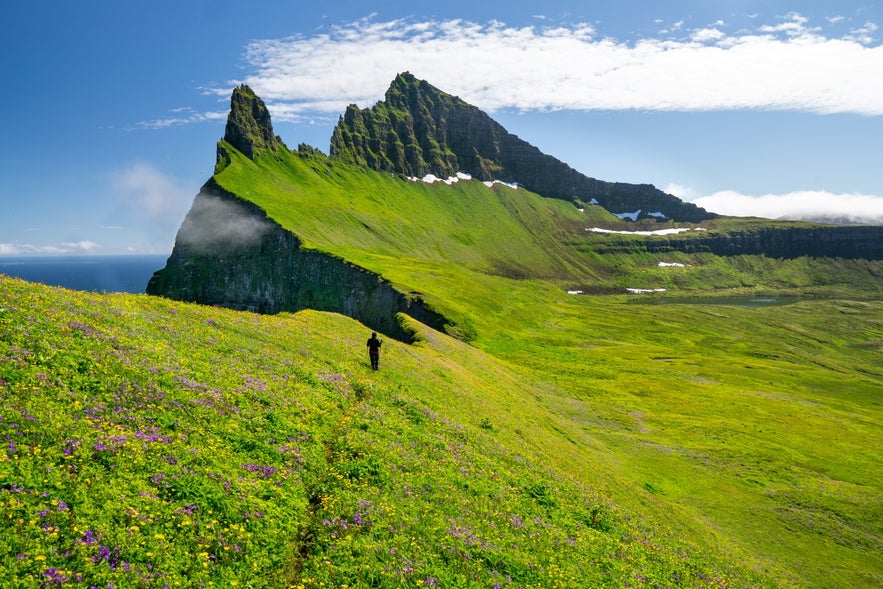
The Westfjords is a large peninsula in northwestern Iceland, renowned for its rugged beauty and pristine landscapes. With steep mountains, deep fjords, and dramatic cliffs, they can be challenging to visit due to their remote location outside of the summer, making these months a perfect window to discover what they have to offer.
Isafjordur, the largest settlement and unofficial capital of the Westfjords, is well known for its picturesque surroundings, rich history, and quaint houses. As a longstanding fishing center, it is famous for its seafood, which is a perfect way to start or finish an adventure in the Westfjords.
Visiting Westfjords can't really be done properly on a simple day trip because of its remote location and winding roads along the fjords. That's why it's advisable to book accommodation in the Westfjords ahead of time before embarking on your trip.
If you're feeling adventurous and want to take to the sea after visiting Isafjordur (a relatively common experience, a 10-hour kayaking tour in the Westfjords to Seydisfjordur is a tailored to those who want to witness the marvelous nature of the region in a unique way.
The Westfjords are also known for their wildlife, and nature lovers can't go wrong with an arctic fox-watching tour in Hornstrandir Nature Reserve. The arctic fox is the only mammal that has been in Iceland longer than humans, making it a perfect opportunity to meet up with a true local.
Other places of note in the Westfjords include Latrabjarg sea cliffs, the westernmost point of Iceland brimming with puffins and other seabirds, and Dynjandi, a powerful series of jaw-dropping waterfalls. Be sure not to miss these beautiful landmarks while visiting the area.
- See more: The Wild Westfjords of Iceland.
FAQs on Iceland in Summer
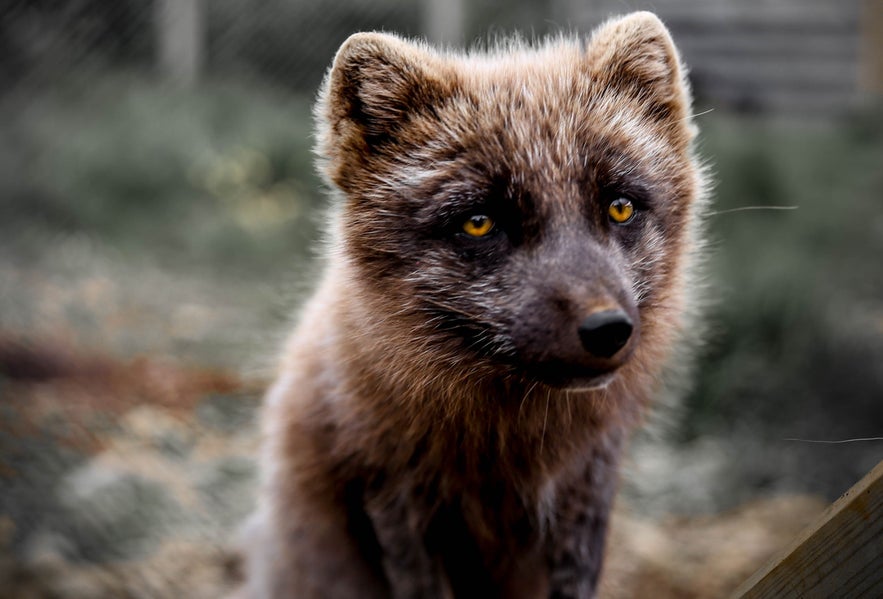
Here, you'll find some of the most frequently asked questions about Iceland in the summer.
When is the best time to visit Iceland in the summer?
The best time to visit Iceland in the summer depends on what you want to do. June has the longest days and is the peak of the midnight sun, July is generally the warmest month of the year, and August is when some of the biggest cultural events take place, such as merchant's weekend.
Is it easy to travel around Iceland in the summer?
Summer is the best time to explore Iceland, especially if you plan to visit more remote areas like the Highlands or the Westfjords, as most roads are open and snow-free.
Can I camp in Iceland in the summer?
Yes, camping is very popular in Iceland during the summer months, and there are numerous campsites throughout the country. Wild camping, however, is restricted, so it's important to use designated camping areas.
What kind of wildlife can I see in Iceland in the summer?
The Icelandic wildlife is never more bustling than in the summertime. You can see seabirds like puffins, especially in places like Latrabjarg. Foxes and whales can also be spotted on designated tours, but you are unlikely to encounter them on your own.
Can I swim in the ocean in Iceland in the summer?
Although Iceland is famous for its hot springs and geothermal pools, swimming in the ocean is typically not recommended due to the cold water temperatures, even in the summer.
- See also: Iceland in Fall - The Ultimate Travel Guide
- See also: Iceland in Winter - The Ultimate Travel Guide
- See also: Iceland in Spring - The Ultimate Travel Guide
Summary of Iceland in Summer
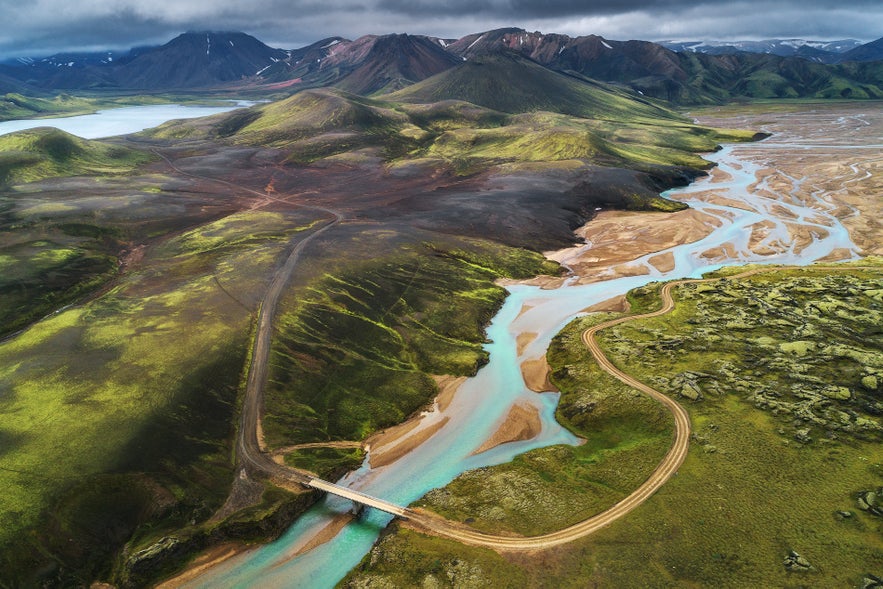 In conclusion, visiting Iceland in summer offers a great way for travelers to discover Iceland's natural beauty without restriction. With longer days and open roads, the entirety of what Iceland has to offer stands open to visitors.
In conclusion, visiting Iceland in summer offers a great way for travelers to discover Iceland's natural beauty without restriction. With longer days and open roads, the entirety of what Iceland has to offer stands open to visitors.
Whether you want to go mountain hiking in the Highlands or take a dip in a natural hot spring, there are endless activities to discover during summer in Iceland. So pack your bags and enjoy the (relatively) warm weather and the magical midnight sun that Icelandic summer has to offer!
Are you planning on a summer trip to Iceland? What are you planning to do? Are you going to take on the Icelandic Highlands? Will you bathe in the midnight sun? If you have visited Iceland in the summer months, please tell us about it in the comments below!


